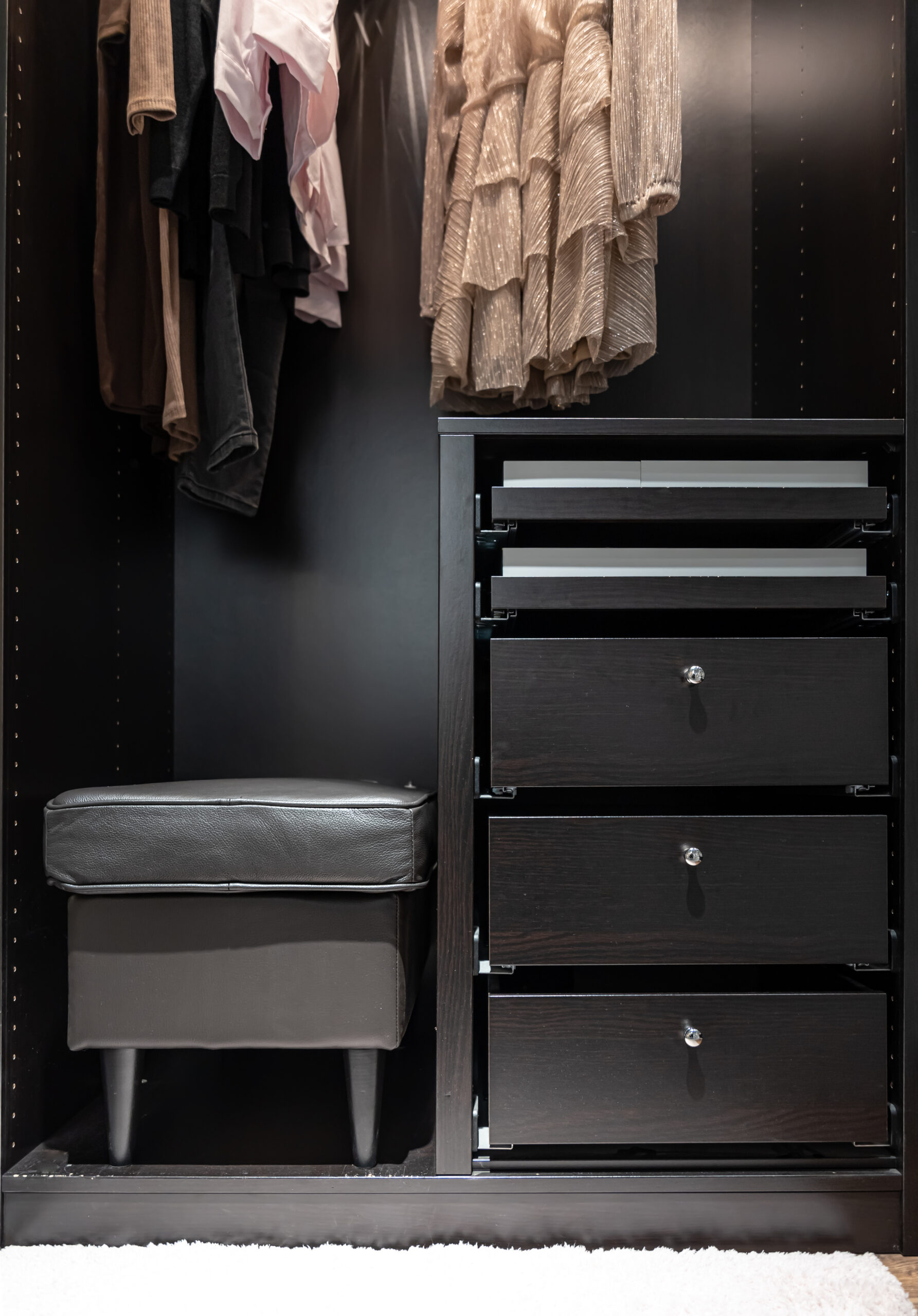DISCOUNTS ARE IN BLOOM! 30% OFF ALL CLOSETS!
Ciri Blog

5 Easy Cabinet Assembly Tips for Hassle-Free Pi Closets Installation
Prepping Your Workspace for Smooth Cabinet Assembly
Ensuring the workspace is properly prepared is a critical step in achieving an efficient and successful cabinet assembly process. A clean, organized area minimizes distractions and allows for seamless handling of tools, components, and instructions.
Start by selecting a flat, stable surface for assembly. Opt for a tabletop, a workbench, or a cleared floor space, ensuring it is large enough to accommodate all cabinet panels and items. This helps prevent uneven assembly, which could result in misaligned components. Lay down a protective layer, such as old sheets, cardboard, or a soft mat, to safeguard both the workspace and cabinet parts from damage like scratches or scuffs.
Next, gather all tools and materials required for the assembly in one place. Commonly used tools include screwdrivers, a rubber mallet, a tape measure, a level, and clamps. Confirm the inclusion of any special hardware or instructions provided in the cabinet package. Arrange these items logically within arm’s reach to avoid unnecessary interruptions once assembly begins. Creating systematic piles for screws, hinges, and other hardware components can further streamline the process.
Adequate lighting cannot be overstated. Make sure the workspace is well-lit to improve visibility when reading instructions or assembling small parts. If the room has dim lighting, consider using a portable workshop light or task lamp for focused brightness.
Finally, maintain a clutter-free environment and ensure there is enough room to move around. Remove unnecessary items from the area and secure any fragile or obstructive objects. A distraction-free zone reduces accidents and enhances focus throughout the task.
By dedicating time to thoughtfully prepare the workspace, the cabinet assembly experience becomes far more efficient, precise, and stress-free.
Choosing the Right Tools for Pi Closets Installation
Selecting suitable tools is essential to streamline the installation process for Pi closet cabinets effectively. The correct tools can save time, prevent damage, and ensure a precise fit during assembly. Investing time in preparing a comprehensive toolkit prior to beginning assembly will significantly enhance efficiency and minimize frustration.
Recommended Basic Tools
To kickstart the installation, it is necessary to have a few basic tools readily available. These include:
- Screwdrivers: A set of both Phillips-head and flathead screwdrivers is indispensable for tightening screws and securing hardware pieces.
- Drill: Using a cordless power drill or screwdriver saves time and improves accuracy, especially when dealing with pre-drilled holes.
- Rubber Mallet: This is ideal for tapping components gently into place without damaging the finishes of the materials.
- Allen Wrenches: Check if the cabinet hardware kit includes bolts requiring hex keys. If not, keep a set of Allen wrenches handy.
Precision Tools for an Accurate Fit
High-quality precision tools enhance alignment and accurate fitting of closet panels. Consider using:
- Tape Measure: Double-check measurements to ensure alignment and proper spacing. Knowing exact proportions during assembly avoids missteps when securing panels or brackets.
- Level: Verify horizontal and vertical alignment of cabinets to prevent uneven installations that could disrupt stability.
- Clamps: For securing panels temporarily while fastening parts together, clamps help ensure stability during assembly.
Additional Supportive Equipment
Depending on the size of the installation area or complexity of your closet design, additional tools may be beneficial:
- Work Gloves: Protecting your hands during assembly ensures better handling and functionality.
- Safety Goggles: Eye protection is essential when using power tools or dealing with sharp hardware edges.
- Drop Cloth or Protective Mat: To safeguard floors or countertops during assembly, a protective mat can be useful, especially when working with heavy pieces.
Transitioning through these steps with the correct tools helps avoid issues such as stripped screws, misaligned panels, and delays during setup. By ensuring access to all necessary equipment, installers can focus on achieving a seamless and professional appearance for Pi closets while maintaining safety and efficiency throughout the assembly process.
Understanding the Pi Closet Assembly Instructions
Proper comprehension of Pi Closet assembly instructions is essential for a smooth and hassle-free installation process. Pi Closets typically provide a detailed guide with step-by-step instructions, but it is vital that users carefully review the document before starting. Each part and step is identified to ensure accurate setup, minimizing the risk of errors or misalignment during assembly.
Key Components in Pi Closet Instructions
The instructions generally include the following elements:
- Tools Required: Most guides begin by listing the necessary tools, such as screwdrivers, Allan keys, or a measuring tape. Double-check that you have all these items ready to avoid interruptions during assembly.
- Inventory Checklist: A detailed inventory of all components, including panels, screws, hinges, and other hardware, is typically included. Verifying all parts beforehand is crucial to ensure you’re not missing any pieces.
- Step-by-Step Guide: Assembly steps are usually broken down sequentially with clear diagrams or illustrations. Study each diagram closely, as even minor positioning details can be critical to proper alignment.
- Safety Precautions: The instructions often highlight safety advice, such as wearing protective gloves or ensuring a stable workspace. Adherence to these precautions reduces the likelihood of injury during assembly.
Navigating Complex Sections
Some sections, particularly involving hinges or drawers, may require extra attention. These often involve multiple parts that must be correctly aligned and securely fastened. Users should follow the diagrams closely and recheck alignment frequently. If the instructions contain troubleshooting tips, referencing these can help address any challenges during assembly.
Common Pitfalls to Avoid
Even with clear instructions, common errors can arise, such as misplacing screws or attaching panels backward. To avoid such issues:
- Dedicate sufficient time to each step without rushing.
- Cross-reference your progress with the provided images or diagrams.
- Keep the assembly area organized to prevent losing small components.
By thoroughly understanding the Pi Closet assembly instructions before initiating the process, users can ensure a streamlined experience, reducing both effort and frustration.
Organizing All Hardware Components Before Starting
Proper organization of hardware components is critical to ensure a smooth and hassle-free cabinet assembly process. Before beginning, one should allocate sufficient workspace and ensure all components are neatly arranged. This step minimizes assembly time, reduces errors, and contributes to greater efficiency in installation.
Inventory Checklist
Conducting an inventory check is essential. All hardware must be accounted for, including screws, hinges, brackets, and specialized items such as drawer slides or locking mechanisms. Missing or mismatched pieces can delay the project. Cross-reference each item against the manufacturer’s packing list to verify completeness.
Categorize Components
Separating components by type is highly recommended. Group screws, bolts, washers, and similar items in clearly labeled containers. Use small trays or zip-lock bags to avoid confusion. Larger components like panels or shelving should be arranged based on sequence of use, maintaining easy accessibility during assembly.
Use Transparent Storage Solutions
Transparent containers or bins can be highly advantageous for organizing smaller hardware items. Their visibility enables swift identification of parts without rummaging. Alternatively, compartmentalized toolboxes can be employed for streamlined access.
Arrange Tools for Assembly
Alongside hardware organization, tools must be arranged systematically. Common assembly tools like screwdrivers, drills, Allen wrenches, and measuring tapes should be readily accessible. Placement near the workspace saves time and prevents unnecessary interruptions.
Plan for a Clean Workspace
Clear any clutter from the workspace to avoid misplacing components. A clean and well-lit environment ensures optimal focus and safety during installation. By maintaining cleanliness, individuals minimize the risk of damaging sensitive hardware components.
Proper organization sets the stage for an error-free assembly process. Transitioning into the cabinet build becomes significantly smoother when every component is readily available and easy to locate.
Tips for Efficiently Aligning and Securing Panels
Ensuring precise alignment and proper fastening of panels is essential during cabinet assembly to prevent structural instability and achieve a professional-looking finish. Each step in the process should be executed with accuracy to minimize gaps and errors. By adhering to specific techniques and using the right tools, installers can remove guesswork and streamline the process effectively.
Preparation Techniques
- Inspect Every Panel: Verify that panels are free from warping or defects before starting the assembly. This ensures a uniform fit across all components.
- Clean Work Area: Keep the workspace organized and free of debris to avoid interfering with assembly and alignment tasks.
- Dry Fit Panels: Perform a dry assembly to check compatibility and alignment before securing them permanently.
Alignment Procedures
- Use Corner Clamps: Employ tools such as corner clamps to hold panels securely at a right angle during positioning. This helps maintain precision and reduces the likelihood of shifting.
- Measure Twice, Assemble Once: Double-check alignment using measuring tools like a tape measure or an alignment jig to confirm accuracy.
- Work Along Straight Edges: Align panels using straight surfaces or guides to ensure edges remain flush during the process.
Securing Techniques
- Pre-Drill Holes: To prevent splitting or uneven fastening, pre-drill holes at appropriate points where screws will be placed.
- Apply Consistent Pressure: When using screws or fasteners, apply steady pressure without overtightening to maintain structural integrity.
- Use Adhesives Selectively: If adhesives are required, apply sparingly and evenly for a clean finish without oozing residue.
Tools to Consider
- Screwdrivers or drills with adjustable torque settings
- High-quality clamps for stability
- A level for guaranteed straightness
By refining alignment and securing practices, installers can reduce errors, save time, and enhance overall durability of the structure. Proper preparation and execution are critical in achieving a flawless installation process.
Best Practices for Handling Hinges and Door Installation
Proper handling of hinges and door installation is essential for a sturdy and functional cabinet. Poor alignment or improper techniques can lead to operational issues or reduced lifespan of the closet. To ensure seamless assembly and long-lasting performance, attention must be given to every detail during this process.
Choose the Right Hinges for Each Door Type
- Match hinge type to door styles: Full-overlay, half-overlay, or inset hinges should align with the desired cabinet door design.
- Consider the door size and weight: Select hinges designed to support the load to prevent sagging or binding over time. Heavy doors may require soft-close or double hinges for smooth operation.
- Opt for durable materials: Brass or stainless-steel hinges offer better resistance to wear and tear.
Precise Marking and Pre-Drilling
- Use a pencil or marker to outline hinge placements on both the door and frame.
- Ensure consistent spacing between hinges by measuring carefully from the top and bottom edges of the door.
- Pre-drill pilot holes to prevent splitting or cracking during screw insertion.
Secure and Align Hinges Accurately
- Begin attaching hinges to the door before securing them to the cabinet frame.
- Use a screwdriver or drill, tightening screws just enough to keep the hinge attached while leaving room for final adjustments.
- Check alignment throughout installation using a level or straight edge to maintain uniform spacing.
Adjust Door Positions for Smooth Operation
- Use the hinge’s built-in adjustment screws to align the door horizontally, vertically, and in-depth.
- Open and close the door multiple times to ensure it moves freely without rubbing against other parts of the cabinet.
Final Tightening and Inspection
- Once adjustments are complete, tighten all screws securely to maintain stability over time.
- Inspect the installed doors to ensure uniform gaps and proper closure.
Adopting these practices helps streamline the process, ensuring a professional-quality finish.
Ensuring Proper Measurements and Adjustments During Assembly
Accurate measurements play a critical role in achieving a seamless cabinet assembly. When focusing on hassle-free Pi Closet installation, precise dimensions must be double-checked to prevent misalignment or incorrect fitting of components. It is imperative to begin by reviewing the installation guidelines provided with the closet to understand specific measurement requisites and tolerances.
Before starting the assembly, the space designated for installation should be measured thoroughly to confirm compatibility with the closet dimensions. Use reliable tools such as a tape measure, spirit level, or angle finder to ensure precision. Measurements should be logged systematically to avoid discrepancies during the installation process. If multiple units are being installed in the same space, plan their positioning ahead of time to accommodate variances in wall layout or floor leveling.
Adjustments are equally crucial during the assembly phase. Holes, slots, or pre-drilled connectors on components should align correctly before tightening screws or bolts. The use of clamps to temporarily hold pieces together while verifying the fit can prevent potential errors. Components like doors, hinges, or sliding panels should be adjusted repeatedly throughout the process to ensure smooth operation post-installation. Align cabinets to be plumb and level by using shims where necessary, especially in older structures where floors and walls may not be perfectly even.
Attention should also be given to spacing gaps between cabinets and adjoining surfaces for both functionality and aesthetics. Minimized gaps help achieve a polished, cohesive look, while ensuring structural integrity. Careful execution of measurements and adjustments leads to optimized fit, minimizes strain on joints, and enhances the longevity of Pi Closet systems, delivering an overall professional-grade assembly.
Troubleshooting Common Issues in Cabinet Assembly
Encountering challenges during cabinet assembly can hinder progress and create unnecessary frustration. Identifying and addressing these common issues ensures a smoother installation process for Pi Closets. Below are common problems and their practical solutions.
Misaligned Parts or Panels
Misalignment typically arises when parts are improperly positioned during assembly. To address this:
- Verify that panels are positioned correctly and aligned with the provided diagrams in the instruction manual.
- Use a tape measure or level to ensure proper alignment before fastening panels together.
- Loosen screws or fasteners slightly if correction is needed and adjust until the panels fit seamlessly.
Difficulty Tightening Screws or Bolts
Problems with screws or bolts can occur due to manufacturing inconsistencies or improper tool usage. Consider the following:
- Use the correct tools, such as a screwdriver or drill, matching the size and type specified in the instructions.
- Inspect screws or bolts for defects and replace them with spares if necessary.
- If threads are stripped or damaged, apply thread sealant or use alternative fasteners included in the hardware pack.
Gaps Between Connected Components
Visible gaps between cabinet parts can disrupt the intended aesthetic and structural integrity. To fix these issues:
- Check for any obstructions between connecting surfaces, such as debris or residue, and clean thoroughly.
- Verify alignment by ensuring all hardware has been tightened uniformly, reducing unevenness.
- Use clamps during assembly to hold parts securely in place before fastening.
Missing or Incorrect Hardware
Missing or incorrect hardware can cause unnecessary delays. To prevent or resolve hardware-related issues:
- Double-check the inventory of parts against the checklist provided with the kit before beginning assembly.
- If hardware is missing, contact Pi Closets’ customer support for replacement components promptly.
- Avoid using substitute hardware unless compatible with the product specifications.
Wobbly or Unstable Finished Cabinets
Instability is often caused by improper leveling or incomplete fastenings. To stabilize assembled cabinets:
- Ensure all screws, bolts, and supports are tightened securely.
- Use adjustable feet or shims, available in the kit, to level cabinets on uneven surfaces.
- Test stability by applying gentle pressure to confirm structural integrity, adjusting as needed.
Addressing Lack of Fit Between Parts
At times, parts may seem ill-fitting despite following instructions. This can happen due to variations in manufacturing measurements. To remedy this:
- Inspect each part for labeling to ensure usage in the correct location.
- Sand or trim small dimensions where necessary to achieve a snug fit, following safety precautions during modifications.
- Reconfirm orientation and attachment methods outlined in the guide before proceeding.
Thoroughly addressing these common issues helps maximize efficiency and ensures a successful installation process for Pi Closets cabinet systems. Proper preparation and attention to detail are critical throughout assembly.
Cleaning Up and Polishing Your Pi Closet for the Final Touch
Once the Pi closet assembly is complete, attention should shift to refining and ensuring everything is pristine for long-term usability. Cleaning and polishing are essential steps to both maintain the integrity of the materials and enhance the overall aesthetics of the installed closet.
Organizing Post-Assembly Debris
Start by removing any residual debris and packaging materials left from the assembly process. Common items include plastic wraps, protective foam, and leftover screws or fasteners. Use a durable garbage bag and separate recyclable materials where applicable. This ensures the workspace remains tidy and reduces the risk of misplaced parts.
Dust and Particle Removal
Assembly often leaves behind sawdust, fine particles, or adhesive residues. Use a microfiber cloth or a soft duster to gently wipe shelves, rods, and surfaces of the closet. For corners or hard-to-reach areas, a handheld vacuum is highly effective. Avoid using abrasive cleaning tools that could scratch or damage the finish of the Pi closet.
Surface Cleaning and Polishing
To enhance the appearance, clean all surfaces with a suitable cleaning solution based on the material of the closet. For wooden finishes, opt for a wood-safe polish or cleaner; for laminated surfaces, mild soap and water are generally sufficient. Always test cleaners on an inconspicuous area to ensure compatibility. After cleaning, apply polish to give surfaces a smooth, shining finish.
Inspection for Alignment and Tightening
Review all hinges, screws, and connections to confirm proper alignment and tightness. During assembly, some components may have loosened unintentionally. A quick inspection and adjustment ensure that the Pi closet remains sturdy and functions optimally.
Final Placement and Interior Arrangement
Once cleaning and polishing are complete, place any removable components such as baskets, trays, or drawers in their designated slots. Ensure the interior of the closet is organized efficiently for storage functionality, keeping frequently used items easily accessible. Add liners if the shelving is prone to wear over time.
Visual and Functional Checks
Before considering the closet fully complete, take a step back to assess its overall appearance. Look for visible imperfections such as uneven surfaces or missed cleaning spots. Confirm doors, panels, and drawers open smoothly without obstruction. This combination of checks ensures both visual appeal and operational ease.
By diligently executing these steps, a Pi closet achieves a polished, professional finish that complements any space while maintaining durability and practicality.
Maintenance Tips to Keep Your Pi Closet in Perfect Condition
Proper maintenance is essential to ensure the longevity and functionality of your Pi closet. Regular care can prevent unexpected issues and preserve the aesthetic appeal of your cabinet system. The following tips provide guidance on how to effectively maintain your Pi closet:
1. Regular Cleaning
- Dust and debris can accumulate over time, reducing the appearance and smooth operation of the closet. Use a soft, lint-free cloth to wipe down surfaces weekly.
- For deeper cleaning, use a damp cloth with mild soap or a non-abrasive cleaner. Avoid harsh chemicals that may damage the finish.
2. Avoid Overloading Shelves
- Each shelf in the Pi closet has a weight capacity limit. To prevent bending or weakening the material, ensure items placed on shelves do not exceed the recommended weight.
- Distribute weight evenly across shelves and drawers to reduce stress on specific areas.
3. Inspect for Loose Components
- Periodically check the hinges, screws, and drawer slides for signs of loosening or wear. Tighten loose screws with an appropriate screwdriver to maintain stability.
- If hardware becomes damaged or worn, replace it promptly to avoid further issues.
4. Protect the Finish
- Keep the closet away from direct sunlight to prevent fading or discoloration. If sunlight exposure is unavoidable, consider using UV-protective window treatments.
- Use liners on shelves and drawers to protect them from spills, scuffs, or moisture damage.
5. Lubricate Moving Parts
- Drawer slides and hinges may stiffen over time. Apply a silicone-based lubricant periodically to ensure smooth operation and extend their lifespan.
- Avoid excessive lubrication as it might attract dust and dirt.
6. Maintain Proper Humidity
- Excessive humidity can lead to warping or mold growth, while very dry conditions can cause materials to crack. Use a dehumidifier or humidifier if necessary to control indoor moisture levels.
- Avoid placing the Pi closet in areas prone to water leakage or extreme temperature conditions.
7. Address Spills Immediately
- Water or liquid spills can result in staining and damage. Wipe spills promptly with a dry cloth, followed by a slightly damp cloth if needed.
- Leaving spills unattended might weaken adhesive joints or panels over time.
Proper attention to these maintenance activities can help extend the life and preserve the functionality of your Pi closet, making it a valuable addition to your home.
Devon Lane

- Genel (16)
- Home Improvement (3)
- Reinvent Your Wardrobe with Modular Shelving Systems 08/26/2025
- Create Your Own Dressing Room: Walk-In Closet Ideas and Inspiration 08/18/2025
- Big Solutions for Small Spaces: Organized Living with Modular Closet Systems 08/10/2025
- 5 Easy Cabinet Assembly Tips for Hassle-Free Pi Closets Installation 08/02/2025
- 10 Genius Shoe Storage Solutions: Try a Shoe Cabinet with Drawers 07/25/2025






